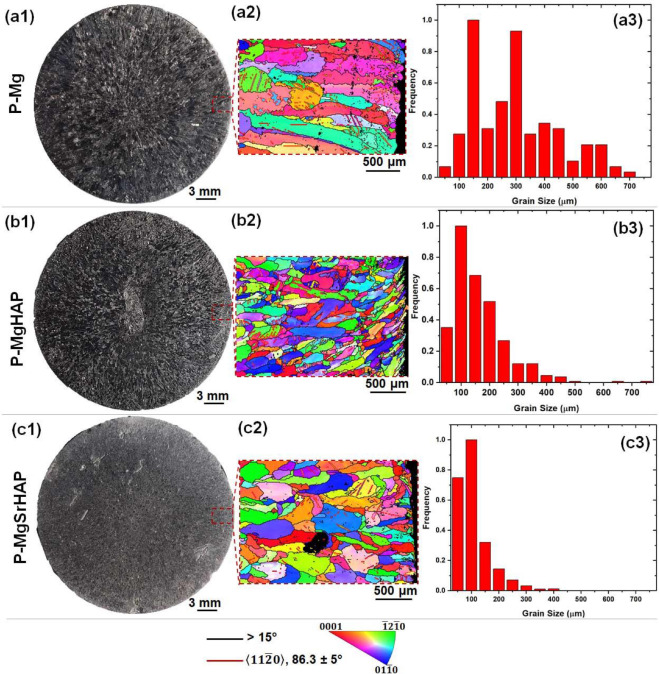
Available online 29 June 2022
Abstract
Magnesium-based biomaterials have been in extensive research for
orthopedic applications for decades due to their optimal mechanical
features and osteopromotive nature; nevertheless, rapid degradation
restricts their clinical applicability. In this study, pristine
magnesium was purified (P-Mg) using a melt self-purification approach
and reinforced using indigenously synthesized nanohydroxyapatite (HAP,
0.6 wt.%) and strontium substituted nanohydroxyapatite (SrHAP, 0.6 wt.%)
using a low-cost stir assisted squeeze casting method to control their
degradation rate. Using electron back-scattered diffraction (EBSD) and
X-ray diffraction (XRD) examinations, all casted materials were
carefully evaluated for microstructure and phase analysis. Mechanical
characteristics, in vitro degradation, and in vitro biocompatibility with murine pre-osteoblasts were also tested on the fabricated alloys. For in vivo examination of bone formation, osteointegration, and degradation rate,
the magnesium-based alloys were fabricated as small cylindrical pins
with a diameter of 2.7 mm and a height of 2 mm. The pins were implanted
in a critical-sized defect in a rat femur shaft (2.7 mm diameter and
2 mm depth) for 8 weeks and evaluated by micro-CT and histological
evaluation for bone growth and osteointegration. When compared to P-Mg
and P-MgHAP, micro-CT and histological analyses revealed that the
P-MgSrHAP group had the highest bone formation towards the periphery of
the implant and hence maximum osteointegration. When the removed pins
from the bone defect were analyzed using GIXRD, they displayed
hydroxyapatite peaks that were consistent with bio-integration. For
P-Mg, P-MgHAP, and P-MgSrHAP 8 weeks after implantation, in vivo degradation rates derived from micro-CT were around 0.6 mm/year,
0.5 mm/year, and 0.1 mm/year, respectively. Finally, P-MgSrHAP possesses
the requisite degradation rate as well as sufficient mechanical and
biological properties, indicating that it has the potential to be used
in the development/fabrication of biodegradable bioactive orthopaedic
implants.
Keywords